How to bake boutique coffee beans shallow moderate depth roasted coffee beans turn yellow one burst point two burst points
Professional coffee knowledge exchange more coffee bean information please follow the coffee workshop (Wechat official account cafe_style)
Roasting coffee beans is a process of heating beans. Unbaked raw beans smell only a little grassy and slightly fruity, but taste almost nothing. Baking causes a series of complex chemical changes inside the beans through the heating process, which in turn releases the various flavor expressions that were originally locked in the raw beans.
There is a saying about the importance of coffee roasting: "the taste of coffee is determined by raw beans, 30% by roasting, and 10% by brewing." The editor thinks that if the nature of raw coffee beans is good enough, the baker will want to retain more local soil layers of the place of origin, so it is not easy to be closer to the flavor of the producing area while taking into account the baking style of the baker.
People who have heard of and come into contact with coffee roasting should be familiar with some professional terms, such as "first explosion" and "second explosion". But what on earth is "explosion"? What is "second explosion"? What's the difference between the two? And, even many people who have come into contact with baking will have doubts: how to judge the "burst point"?
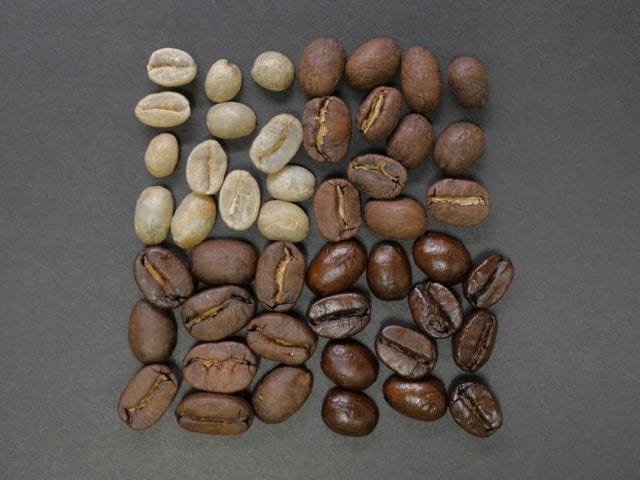
The sound of baking
If you go to a coffee shop and there happens to be a bean roaster, it's easy to hear beans beeping as they are roasted. Coffee beans have two opportunities to make a sound when they are heated, which are called "first explosion" and "second explosion" (First Crack and Second Crack).
First explosion of First Crack
This is because of the heat, which produces a large amount of gas and water vapor inside the beans. when the internal pressure cannot hold up, the volume of the beans expands and then bursts. The explosion occurs when the baking temperature is about 180 mi 205 °C (different measuring points can vary greatly from model to model), and the sound is so loud that it sounds a bit like popcorn.
Second explosion Second Crack
If the heating continues at this time, as the temperature continues to rise, a relatively subtle sound belonging to the second explosion will be heard, and the baking temperature is about 205m / m 230 °C (different temperature measuring points, different models will have a great deviation). After the second explosion begins, the oil of the beans will surface, that is, the stage of deep baking. Curious you may wonder what will happen if you continue to bake. Of course, because of carbonization, it finally burned up.
How to determine the "burst point"?
The beginning of an explosion is an important control point for roasting coffee. From here on, the taste will develop rapidly. The "burst point" is when the bean expands and makes a sound like popcorn or dried wood breaking.
But not all beans crack at the same time. Most of the explosions were first a sporadic burst, followed by a tense silence, and then a second. But at some point, it's as if a bean shakes its arms and immediately responds, and you will begin to hear a continuous crackling sound. So, when on earth should we determine the exact time of the "burst point"? Is it 9:15 or 9:40?
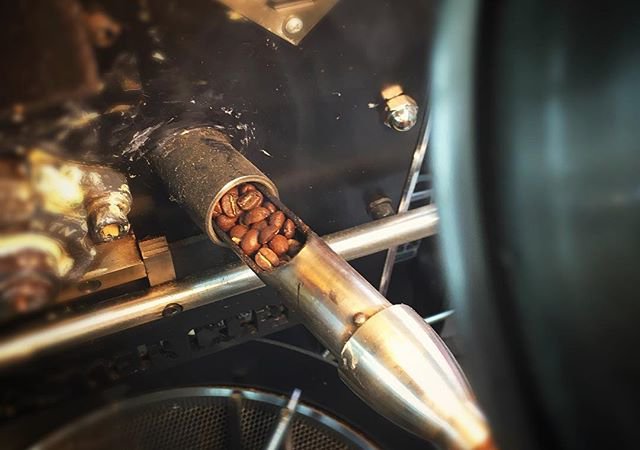
Another factor that makes it very difficult to determine a "burst point" is the background noise: the noise of the roaster running and the sound of beans knocking on the boiler wall. So it will be difficult to hear the popping sound clearly in the actual baking.
You don't believe me? Let's try and listen to the following recording. You can look at the time and record a burst point.
The editor saw this "burst listening test" on a baking forum and saw a lot of people comment on the "burst point" they heard.
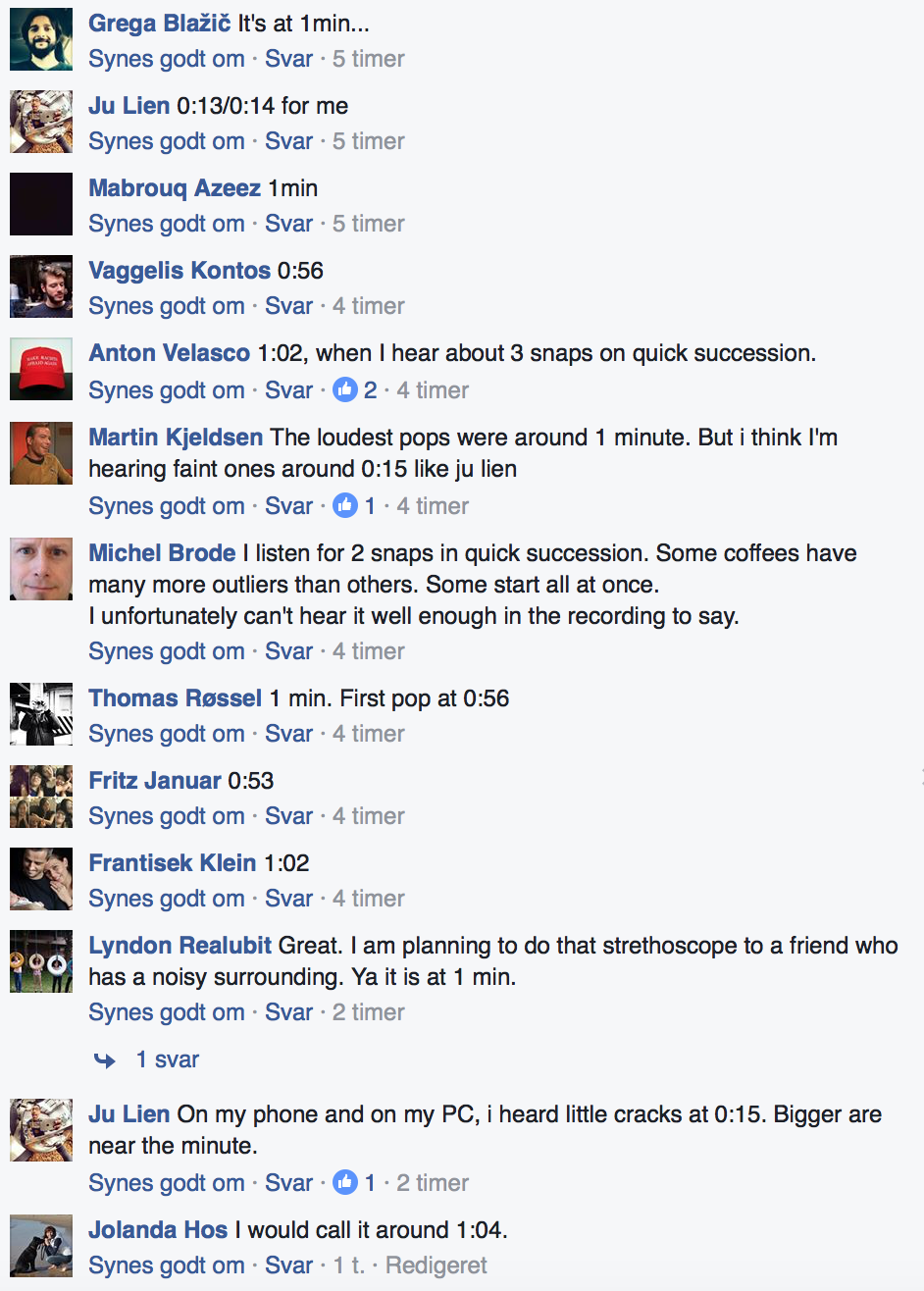
There will be sporadic bursts around 0:15, and we will think, "has the explosion finally begun?" But unfortunately, it is silent again. Then there was another clear popping sound in about 53 seconds, but we need more popping sound to prove that this is the real "burst point". Therefore, most people will think that the "burst point" is about a minute.
The sound of some beans will be particularly clear, while others will be less obvious: delayed bursts (for example, after 13 minutes) will appear fainter and indistinguishable; low-altitude, low-density beans tend to be faint.
What if I can't hear the sound of "bang"?
Whether or not a burst can be heard or not sometimes depends on the design and construction of the bean baker. if the insulation is thick enough, it is possible not to hear a burst during baking. At this point, we usually need to borrow other senses to help:
Smell, smell the beans in the sampling stick, when the explosion begins, there will be a smell of vinegar.
Look, look at the beans in the sampling stick. If you happen to pick up the beans that are bursting, you will see the beans jumping around.
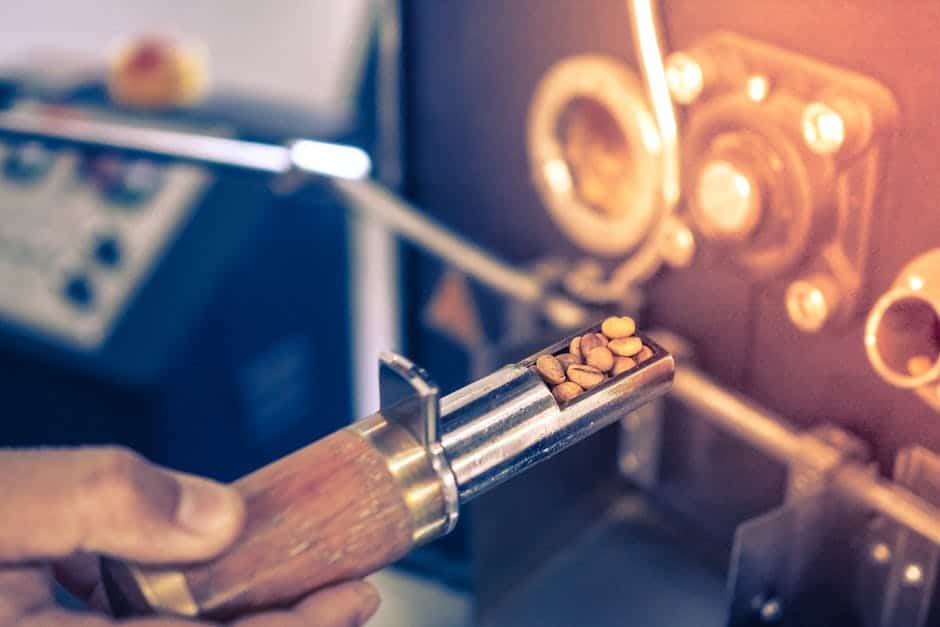
Listening equipment
Finally, you can borrow some monitoring equipment to intercept the sound.
Some bakers use stethoscopes to listen. Of course, stethoscopes can only listen to sound through air, not directly against metal or glass (because other noises are also transmitted). Therefore, the witty bean baker will connect the stethoscope to the sampling stick.
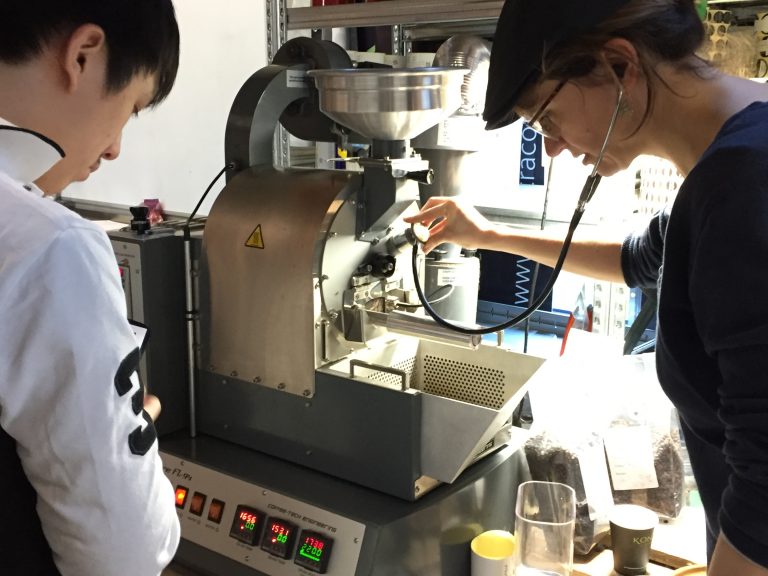
There is also a device: earmuffs with tubes. The principle is the same as the stethoscope, it looks much cooler, but does the baker who listens to the popping of beans seem to be touching fish at work? Haha ~
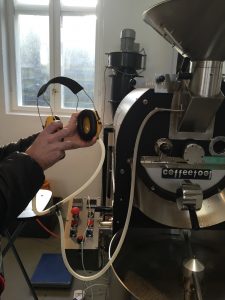
END
Important Notice :
前街咖啡 FrontStreet Coffee has moved to new addredd:
FrontStreet Coffee Address: 315,Donghua East Road,GuangZhou
Tel:020 38364473
- Prev

Is coffee bad when it's not sour? Coffee acid is not acid has nothing to do with quality, the whole system likes!
Professional coffee knowledge exchange More coffee bean information Please pay attention to coffee workshop (Weixin Official Accounts cafe_style) Please give me a cup of non-sour coffee, thank you! This should be one of the most common situations encountered in boutique coffee shops, and customers who have a longer history of drinking coffee tend to have a lower tolerance for sourness. Although coffee consumption has increased in recent years,
- Next
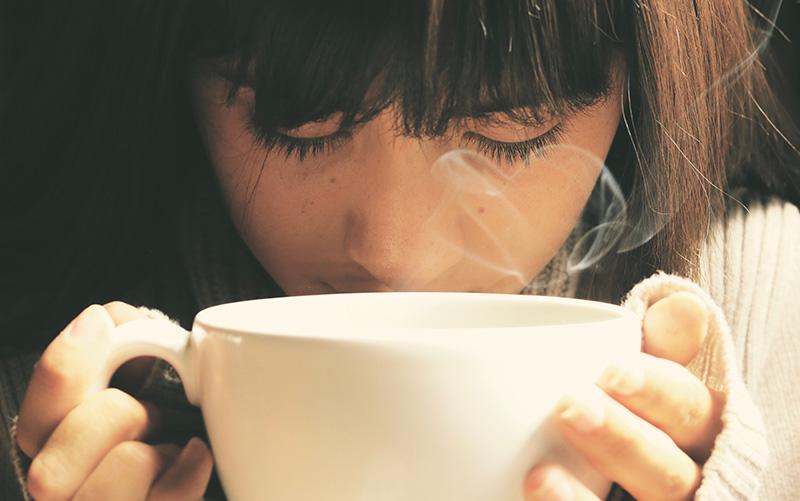
The sweetness in coffee? Are you sure you really "drank" the sweetness of the coffee?
Professional coffee knowledge exchange more coffee bean information please follow the coffee workshop (Wechat official account cafe_style) in this year's WBC World Barista Competition, the champion Jeon of South Korea interpreted coffee through his understanding of carbohydrates * (carbohydrates), which also gave you an opportunity to get a glimpse of the sensory role of sugars in coffee. Thanks @ Coffee Sand
Related
- Beginners will see the "Coffee pull flower" guide!
- What is the difference between ice blog purified milk and ordinary milk coffee?
- Why is the Philippines the largest producer of crops in Liberia?
- For coffee extraction, should the fine powder be retained?
- How does extracted espresso fill pressed powder? How much strength does it take to press the powder?
- How to make jasmine cold extract coffee? Is the jasmine + latte good?
- Will this little toy really make the coffee taste better? How does Lily Drip affect coffee extraction?
- Will the action of slapping the filter cup also affect coffee extraction?
- What's the difference between powder-to-water ratio and powder-to-liquid ratio?
- What is the Ethiopian local species? What does it have to do with Heirloom native species?

